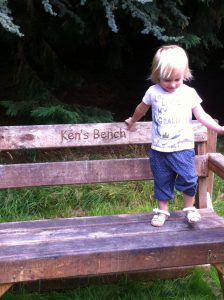Have you done the market research on your chosen magazine? If not check out how to do this in my article at Frost Magazine.
You have your character don’t you? Can you see him or her in your mind’s eye? Did you profile your ideal reader to come up with the character or did they come from somewhere else? Is it someone you know? If it is, make sure you disguise them so that they don’t recognise themselves – especially if you are not going to show them in a flattering light. In my experience most people never recognise themselves anyway but they may identify with the character’s dilemma, which is exactly what you need to do to create a story.
If you are writing a short story of 1,000 – 2,000 words you don’t have lots of room for character description but you do need to have traits that can make the character come alive. I very rarely add much description other than hair and/or eye colour, height (small, petite, tall) and weight. I may describe something of what they are wearing if it is important to building the image. You don’t have many words to spare so think carefully what detail you do actually need to include. Saying that, you need in some way to be able to imagine your character so that the reader can too.
Give them a name – very important. Choose names wisely, give them plenty of thought. Age can reveal so much about character. We all make assumptions when we hear a name don’t we? Picture Rupert, now contrast with Ken? Can you see them, very different aren’t they? Rupert to me is upper class, in his 20s, while Ken is a solid, down to earth person, late 50s? Do you agree?
What about Elizabeth, Lizzy, Beth and Betty? Who do you imagine now? You can also use names to mislead the reader
if that is what you intend to do. Elsie could be an old woman but she could also be a three year old. This is the Elsie in my life.
I wrote a short story that appeared in Woman’s Weekly magazine some time ago. The viewpoint character, a young woman, was looking for Molly who had got lost in a large store. I wanted the reader to think that Molly was a small child when in fact it was the woman’s mother. Use the name to mislead only if that is your intention, don’t confuse the reader for no purpose, they will not thank you for it.
Some writers like to write an entire character profile for each character in a short story. I don’t do this, mostly because I am writing about a moment in time not an extended narrative. As always, do what works for you.
Photographs are a great tool to generate characters. There is plenty of choice in magazines and on the internet. Use them to inspire you.
Here’s a list of names: George, Harry, Ed, Simon, Liz, Mary, Susie, Chris.
How old are they?
Where do they live?
Work?
Try and do them all but if not try and work with three. We’ll use them in a story.
